Blog Archives
Simple Remedies for Cracked Heels
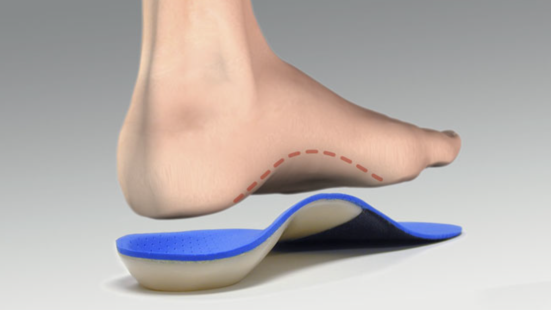 Cracked feet often occur due to not only improper foot care, but cold weather, shoes that don’t fit well, or even standing for extended periods of time. If not properly treated, cracked heels can create discomfort and even bleeding. Fortunately cracked heels can be eased with the help of several simple remedies. As cracked feet are caused by dry skin, moisturizing is important. Castor oil and petroleum jelly are heavy moisturizers that can ease extremely cracked feet. Feet should also be properly dried every time they are wet. Drinking plenty of water will keep the body—and therefore the skin—properly hydrated, keeping skin from becoming dry. Ensure that the soaps you are using are mild soaps that are not harsh and over-dry the skin. Exfoliating the feet by gently scrubbing with a pumice stone can help remove dry skin.
Cracked feet often occur due to not only improper foot care, but cold weather, shoes that don’t fit well, or even standing for extended periods of time. If not properly treated, cracked heels can create discomfort and even bleeding. Fortunately cracked heels can be eased with the help of several simple remedies. As cracked feet are caused by dry skin, moisturizing is important. Castor oil and petroleum jelly are heavy moisturizers that can ease extremely cracked feet. Feet should also be properly dried every time they are wet. Drinking plenty of water will keep the body—and therefore the skin—properly hydrated, keeping skin from becoming dry. Ensure that the soaps you are using are mild soaps that are not harsh and over-dry the skin. Exfoliating the feet by gently scrubbing with a pumice stone can help remove dry skin.
Cracked heels can become painful if left untreated. To learn more, consult with Dr. Sharon Pletcher of Pennsylvania. Dr. Pletcher will attend to all of your foot and ankle needs.
The Truth about Cracked Heels
Cracked Heels
Cracked heels are unappealing, and make it harder for you walk around in sandals. Not only may they look bad, but they can also tear stockings, socks, and wear out your shoes. There are several methods to help restore a cracked heel and prevent further damage.
How do you get them?
Dry skin is the number one culprit in creating cracked heels. Many athletes, walkers, joggers, and even swimmers suffer from cracked heels. Age and skin oil production play a role to getting cracked heels as well.
Promote Healing
Over the counter medicines can help, especially for those that need instant relief, or who suffer from chronic dry feet.
Wear Socks – wearing socks with medicated creams, helps lock in moisture so it can stay on longer.
Moisturizers – applying it both day and night will help alleviate dryness which causes cracking.
Pumice Stones – these remove dead skin, and then you can massage cream onto your foot. This way the cream will be absorbed. The skin needs to be exfoliated; therefore the outer layer dead skin needs removal.
For more information regarding cracked heels, follow the link below.
If you have any questions, please feel free to contact our office located in State College, PA. We offer the newest diagnostic and treatment technologies for all your foot and ankle needs.
Read more about cracked heels.
Boys & Girls Club Members receive New Shoes thanks to Samaritan’s Feet
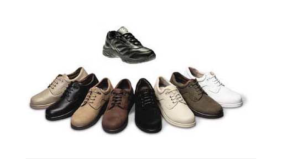 The successful Samaritan’s Feet event, held by Samaritan’s Feet International and Northeastern Indiana Credit Union Chapter (NEICUC), was able to put new pairs of shoes onto three hundred members of the Boys & Girls Club of Fort Wayne and the Euell A. Wilson Center. To help spread and share hope among local children, the event also had the members’ feet washed by volunteers. Samaritan’s Feet’s leaders believe it is possible to show to the youth that they can reach their dreams. NEICUC financed the event, coordinated the logistics, and recruited over 40 volunteers to help run the project. “It is wonderful to see the collaborative efforts that have been done on behalf of the youth in our community,” said Joe Jordan, President and CEO of the Boys & Girls Clubs of Fort Wayne.
The successful Samaritan’s Feet event, held by Samaritan’s Feet International and Northeastern Indiana Credit Union Chapter (NEICUC), was able to put new pairs of shoes onto three hundred members of the Boys & Girls Club of Fort Wayne and the Euell A. Wilson Center. To help spread and share hope among local children, the event also had the members’ feet washed by volunteers. Samaritan’s Feet’s leaders believe it is possible to show to the youth that they can reach their dreams. NEICUC financed the event, coordinated the logistics, and recruited over 40 volunteers to help run the project. “It is wonderful to see the collaborative efforts that have been done on behalf of the youth in our community,” said Joe Jordan, President and CEO of the Boys & Girls Clubs of Fort Wayne.
Growing children should wear proper fitting shoes to ensure that their development is not hindered by detrimental foot problems. For more information about proper shoe fitting and its benefits for children, consult with podiatrist Dr. Sharon Pletcher of Pennsylvania. Dr. Pletcher can help you determine the best fit for your children’s feet and provide you with the information to help answer all of your questions.
Proper Shoe Fitting
A common concern when it comes to foot health, having properly fitted shoes can help prevent injuries to the foot. Out feet affect our posture and gait, which in turn affects the biomechanics and overall bodily structure. With 33 joints, 26 bones, and over 100 ligaments, the potential for serious injury is much greater than one realizes. Although the feet cease growth in adulthood, they still change shape as they mature. Here are some factors to consider when it comes to investing in properly fitting shoes:
- Be sure the shoes fit correctly right away
- Ensure the ball of your foot fits comfortably in the widest portion of the shoes
- Even though they may look fashionable, improperly fitting shoes can either create adverse conditions or exacerbate existing ones you may already have
- Walk along a carpeted surface to ensure the shoes comfortably fit during normal activity
For more information about Proper Shoe Fitting, follow the link below.
If you have any questions, please contact our office located in State College, PA. We offer the newest diagnostic and treatment technologies for all your foot ankle injuries.
Read more about Proper Shoe Fitting
Foot Massages Can Serve to Benefit Women during Pregnancy
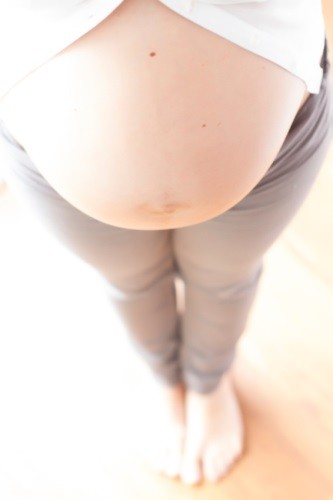 Women often experiencing swelling and soreness in their feet as a result of rapid weight gain and increased production of the hormone relaxin during pregnancy. However, this discomfort can be eased by having the feet massaged. Massaging increases flexibility, relieves stress, and reduces fluid retention in the muscle’s tissues.
Women often experiencing swelling and soreness in their feet as a result of rapid weight gain and increased production of the hormone relaxin during pregnancy. However, this discomfort can be eased by having the feet massaged. Massaging increases flexibility, relieves stress, and reduces fluid retention in the muscle’s tissues.
A study from the International Journal of Nursing Practice showed that pregnant women who received twenty-minute foot massages five days in a row had considerably less swelling in their lower extremities than those who didn’t. Likewise, a study published in Applied Nursing Research, showed that women who recently had given birth through C-sections significantly experienced reduced pain in their limbs after getting foot rubs.
Getting the feet massaged is a great way for pregnant women to take care of their lower extremities. To learn more about caring for the feet during pregnancy, talk to Dr. Sharon Pletcher of Pennsylvania. Dr. Pletcher can treat your podiatric needs.
Pregnancy and Foot Health
What foot problems can arise during pregnancy?
One problem that can occur is over-pronation, which occurs when the arch of the foot flattens and tends to roll inward. This can cause pain and discomfort in your heels while you’re walking or even just standing up, trying to support your baby.
Another problem is edema, or swelling in the extremities. This often affects the feet during pregnancy, but tends to occur in the later stages.
How can I keep my feet healthy during pregnancy?
- Wearing orthotics can provide extra support for the feet and help distribute weight evenly
- Minimize the amount of time spent walking barefoot
- Wear shoes with good arch support
- Wear shoes that allow for good circulation to the feet
- Elevate feet if you experience swelling
- Massage your feet
- Get regular, light exercise, such as walking, to promote blood circulation to the feet
For more information about Pregnancy and Foot Health, please follow the link below.
If you have any questions, please feel free to contact our office located in State College, PA. We offer the newest diagnostic and treatment technologies for all your foot and ankle needs.
Read more about Pregnancy and Foot Health
Wearing the Wrong Fitting Running Shoe Can Cause Serious Injury
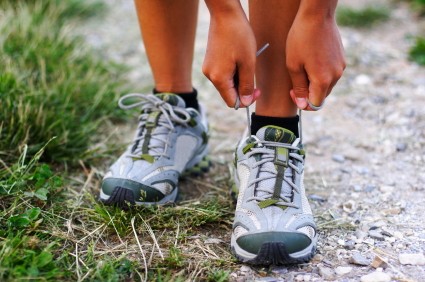 DMC Sports Performance Academy manager Laura Ramus knows that wearing the wrong pair of running shoes can cause many injuries to the body. She knows this become she almost fell victim to the wrong shoe, twice. Wearing an incompatible running shoe can create hip, knee, and back pain and can induce injuries such as Achilles tendonitis and plantar fasciitis. Ramus also recalled her toes going numb while wearing a pair of shoes that were not wide enough. This occurs because each person has a different type of foot width, arch and, pronation. Certain feet can fit into nearly any shoe, but if a foot is too wide or has too high of an arch, it is important to be fitted into the appropriate shoe.
DMC Sports Performance Academy manager Laura Ramus knows that wearing the wrong pair of running shoes can cause many injuries to the body. She knows this become she almost fell victim to the wrong shoe, twice. Wearing an incompatible running shoe can create hip, knee, and back pain and can induce injuries such as Achilles tendonitis and plantar fasciitis. Ramus also recalled her toes going numb while wearing a pair of shoes that were not wide enough. This occurs because each person has a different type of foot width, arch and, pronation. Certain feet can fit into nearly any shoe, but if a foot is too wide or has too high of an arch, it is important to be fitted into the appropriate shoe.
Running can be a great way to keep your body healthy and in-shape, but it can also lead to injuries if you’re not careful. If you have a running injury or have an interest in preventing one, contact Dr. Sharon Pletcher of Pennsylvania. Dr. Pletcher can instruct you on proper running techniques and help you keep your lower extremities safe.
How to Prevent Running Injuries
Many common running injuries are caused by overuse and overtraining. When the back of the kneecap starts wearing out and starts causing pain in your knee, this is commonly referred to as runner’s knee. Runner’s knee is a decrease in strength in your quadriceps and can occur if you’re not wearing properly fitted or supporting shoes. Runner’s knee usually is treated with strengthening exercises focusing on the quad muscles and sports orthotic. To prevent runner’s knee, focusing on hip strengthening is a good idea, as well as strengthening your quads to keep the kneecaps aligned. Physical therapy can help you learn the best exercises to heal runner’s knee.
What Are Some Causes of Running Injuries?
- One cause of a common running injury is called iliotibial band syndrome.
- Plantar fasciitis is also another common injury.
- Stress fractures can occur from overtraining, lack of calcium, or even your running style.
Best Ways to Prevent Running Injuries
- Wear footwear that fits properly and suits your running needs.
- Running shoes are the only protective gear that runners have to safeguard them from injury.
- Make a training schedule.
If you have any questions, please feel free to contact our office located in State College, PA. We offer the newest diagnostic and treatment technologies for all your foot and ankle injuries.
Read more about Preventing Running Injuries
Local Swim Class Exercises Senior Feet
 Sue Asher is the instructor of a local aerobics class for senior citizens. The class meets twice a week at a swimming pool near Manville, NJ. The work out appears to be calm and simple; however, it greatly improves muscles strength and prevents joint problems such as arthritis from occurring. Asher’s students exercise their feet, arms, and legs while enjoying their time in the water.
Sue Asher is the instructor of a local aerobics class for senior citizens. The class meets twice a week at a swimming pool near Manville, NJ. The work out appears to be calm and simple; however, it greatly improves muscles strength and prevents joint problems such as arthritis from occurring. Asher’s students exercise their feet, arms, and legs while enjoying their time in the water.
“Class starts at 10:45 but between 10:30 and 10:45 we catch up on things that are happening in the town, happening with the senior citizens and it is our social time,” Asher stated. “Then we do our exercises and work hard.”
Swimming is a great way for the elderly and people with arthritic feet to get exercise with ease. If you have any questions regarding the benefits of swimming on the feet, consider contacting podiatrist Dr. Sharon Pletcher of Pennsylvania. Dr. Pletcher will explain the unique health advantages this activity has and recommend some simple exercises.
Benefits of Swimming and Foot care
Our feet receive the most stress on a daily basis. Walking, running, and long standing contribute to pain and stress on the feet. Swimming helps promote circulation and keep the body feeling great and healthy.
Benefits of swimming:
Improve blood circulation
- Swimming is a good, safe way to get in extra physical activity and improve circulation, without causing further trauma to the feet
Relieve aches or pains
- It takes all the pressure off of them, allowing the feet to relax and recover, and improves blood flow to them.
Circulation overall for diabetics
- Swimming contributes to blood flow, and increase oxygen levels within the body.
Reduce foot inflammation
- Swimming in warm water can increase blood flow and make it easier to move and stretch the afflicted foot. The feet are also exposed in water, giving them much needed air.
Swimming the helpful alternative:
Many people like the elderly and diabetics suffer from weakened muscles and joints. A water sport like swimming will support the body, thus allowing him or her to move freely. Blood flow circulation is a main trigger to tired inflamed feet.
If you have any questions feel free to contact our office in State College, PA. We offer the latest in diagnostic and treatment technology to meet your needs.
Read more about the Benefits of Swimming and Foot Care
UK Woman Confuses Plantar Warts for Corns
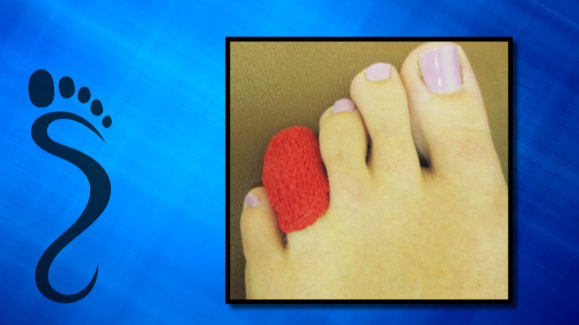 Kelly Bradford found several lumps in her heels and first believed them to be corns due to their rough texture. The growths did not seem to be going away with the help of salicylic acid and were much more painful that corns usually are. When the growths became so painful that Bradford could not place her heels on the ground, she decided to contact her doctor.
Kelly Bradford found several lumps in her heels and first believed them to be corns due to their rough texture. The growths did not seem to be going away with the help of salicylic acid and were much more painful that corns usually are. When the growths became so painful that Bradford could not place her heels on the ground, she decided to contact her doctor.
Bradford’s physician concluded that she did not have corns and had contracted plantar warts. The pain she was more painful than anything she has experienced because the warts were pinching the nerves of her feet. With the help of some over-the-counter medication and cryotherapy, the warts in Bradford’s heels soon disappeared.
Plantar warts can be painful and can worsen if not treated properly. If you would like to be treated for plantar warts, consult with podiatrist Dr. Sharon Pletcher of Pennsylvania. Dr. Pletcher will attend to all of your foot and ankle needs and provide you with quality treatment.
About Plantar Warts
Plantar warts are found on the feet. These warts are caused by the human papillomavirus (HPV) getting into open wounds on the feet. You can recognize plantar warts by a hard bump on the foot. They are usually found on the heels or balls of the feet. Plantar warts are usually not a sign of anything dangerous but do not ignore them if they do cause pain or embarrassment.
If you do have a plantar wart, you may notice some pain when standing but since these warts are not cancerous or dangerous, a podiatrist only needs to be seen if there is excess pain. Although plantar warts don’t often call for treatment, there are options available. They can be frozen off, removed by an electric tool or burned off using laser treatment.
Home remedies are also available to help with plantar warts. An apple cider vinegar soak can help remove the wart. You can soak your feet in the vinegar for 20 minutes before using a pumice stone to remove any loose skin from the wart.
For more information about Plantar Warts, follow the link below.
If you have any questions, please contact our office located in State College, PA. We offer all the latest in diagnostic and treatment technologies to meet your needs.
Read more about Plantar Warts
Acupuncture Could Help Treat those Experiencing Heel Pain
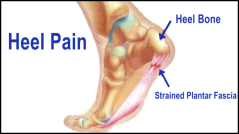 A recent study conducted by scientists at the Guangzhou Dongsheng Hospital has revealed that acupuncture is effective in treating heel pain. Xu Xuemeng, a researcher at Guangzhou, and his team used sixty-six patients that were experiencing heel pain. They gave some patients conventional drugs as a control group and gave the rest of the patients a filiform acupuncture needle treatment.
A recent study conducted by scientists at the Guangzhou Dongsheng Hospital has revealed that acupuncture is effective in treating heel pain. Xu Xuemeng, a researcher at Guangzhou, and his team used sixty-six patients that were experiencing heel pain. They gave some patients conventional drugs as a control group and gave the rest of the patients a filiform acupuncture needle treatment.
After six months, it was discovered that patients with acupuncture treatment had an effectiveness rating of 97% while the control group had a rating of 76%. Acupuncture has also been effective in alleviating the pain of conditions such as Achilles tendonitis and plantar fasciitis.
Anyone can wind up suffering from heel pain. If your heel is hurting, see Dr. Sharon Pletcher at Pennsylvania. We will treat your heel pain symptoms in addition to other podiatric-related needs.
Causes of Heel Pain
- Heel pain is often associated with plantar fasciitis. The plantar fascia is a band of tissues that extends along the bottom of the foot. A rip or tear in this ligament can cause inflammation of the tissue.
- Achilles tendonitis is another cause of heel pain. Inflammation of the Achilles tendon will cause pain from fractures and muscle tearing. Lack of flexibility is also another symptom.
- Heel spurs are another cause of pain. When the tissues of the plantar fascia undergo a great deal of stress, it can lead to ligament separation from the heel bone, causing heel spurs.
Why Might Heel Pain Occur?
- Wearing ill-fitting shoes
- Wearing non-supportive shoes
- Weight change
- Excessive running
Treatments
Heel pain should be treated as soon as possible for immediate results. Keeping your feet in a stress free environment will help. If you suffer from Achilles tendonitis or plantar fasciitis, applying ice will reduce the swelling. Stretching before an exercise like running will help the muscles. Using all these tips will help make heel pain a thing of the past.
With the advancements in technology and greater knowledge of how muscles and joints work, physical therapists can turn things around dramatically.
If you have any questions, please feel free to contact our office in State College, PA. We offer the newest diagnostic and treatment technologies for all your foot care needs.
Read more about Heel Pain
Fitness Based Smartphone App Creates Healthy Competition Among Employees
 Thanks to innovative smartphone apps and sensors such as the Fitbit, employees of Washington, D.C. have a found a new competition in how many steps to take a day. Lawmakers and administration officials are use this form of technology to track the employees’ steps, miles, calories burned, and heart rate.
Thanks to innovative smartphone apps and sensors such as the Fitbit, employees of Washington, D.C. have a found a new competition in how many steps to take a day. Lawmakers and administration officials are use this form of technology to track the employees’ steps, miles, calories burned, and heart rate.
In addition, many employers now hold office-held competitions which helps employees make the doctor recommended amount of 10,000 steps per day. “The type of people you find on Capitol Hill are very competitive by nature,” Alexa Marrero says, “You have a bunch of Type A personalities in jobs prone to keeping you behind a desk all day, so there are a lot of people who have found this as a fun way to get up.”
Walking is a tried and tested way to successfully exercise the feet. To learn more, consult with podiatrist Dr. Sharon Pletcher of Pennsylvania. Dr. Pletcher will answer any of your foot- and ankle-related questions.
Exercise for Your Feet
If you spend most of your time on your feet, or don’t either way your feet should deserve attention. There are many people who exercise regularly and still don’t spend enough time to care for their feet. Your foot does get exposure that requires maintenance since your health has a lot to do with footing.
Exercises
Toe rise – this exercise involves standing on the tip-toes for a count of 15 seconds, then resting your feet on ground. This exercise should be repeated three times a day to strengthen the feet.
Toe Pick-ups – the toes are exercises that are done by picking up small items using your toes. This helps strengthen the muscles on the upper part of the feet. Three sets along with 15 seconds being held should be completed. Small items like marbles or stationary will work.
Ankle Pump – can be performed upwards or downwards. The workout can be completed both ways at the same time. This involves flexing the foot either towards the shin or to the ground. This makes the foot work very well, working large parts of the muscles.
For more information about Exercise for Your Feet, follow the link below.
If you have any questions, please feel free to contact our office located in State College, PA. We offer the newest diagnostic and treatment technologies for all your foot care needs.
Read more about Exercise for Your Feet
Dark Chocolate Helps Patients With Circulation Difficulties
An interesting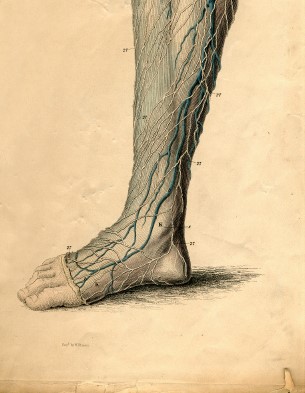 shows that dark chocolate polyphenols may help when it comes to symptoms of peripheral artery disorder (PAD). Sapienza University scientists gathered 20 participants for this study. The subjects were provided either dark chocolate or milk chocolate.
shows that dark chocolate polyphenols may help when it comes to symptoms of peripheral artery disorder (PAD). Sapienza University scientists gathered 20 participants for this study. The subjects were provided either dark chocolate or milk chocolate.
After eating the chocolate the subjects were instructed to walk on treadmills for a set time. As the scientists monitored the patients, they found that patients who ate dark chocolate experienced better circulation and were able to walk 10% farther than those who had eaten the milk chocolate.
Poor circulation is difficult to live with. If you have poor circulation in your feet or ankles, consider calling podiatrist Dr. Sharon Pletcher of Pennsylvania. Dr. Pletcher can treat your podiatric needs.
Poor Circulation in the Feet
Poor blood circulation in the feet and legs is caused by peripheral artery disease (PAD), which is the result of a buildup of plaque in the arteries.
Plaque buildup or atherosclerosis results from excess calcium and cholesterol in the bloodstream. It usually restricts the amount of blood which can flow through the arteries. Poor blood circulation in the feet and legs are sometimes caused by inflammation in the blood vessels, known as vasculitis.
Causes
Lack of oxygen and oxygen from poor blood circulation restricts muscle growth and development.
It can also cause:
-muscle pain -numbness in legs
-cramps -skin discoloration
-weakness -slower nail & hair growth
-stiffness -erectile dysfunction
Those who have diabetes and or smoke are at greatest risk for poor circulation, or who are over 50.
If you have poor circulation in the feet and legs it may be caused by PAD, and is important to make changes to your lifestyle in order to reduce risk of getting a heart attack or stroke. Exercise and maintaining a healthy lifestyle will dramatically improve conditions.
If you have any questions, please feel free to contact our office located in State College, PA. We offer the newest diagnostic and treatment technologies for all your foot care needs.
Read more about Poor Circulation in the Feet
Pain in Toes Aided by Innovative Implant Technology
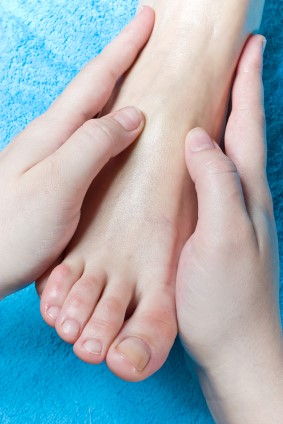 Cartiva is an implant that could help ease the pain and stiffness from arthritis. To prevent the toes from rubbing together while lowering the pain, the implant is inserted between the bones of the toe via surgical means. Cartiva’s flexibility and putty-like consistency allow it to act like cartilage and absorbing shock. Val Cornwall, a sixty-seven-year-old resident of Hillingdon, Middlesex underwent surgery for the procedure in February 2011 and is now as active as ever. About a half million people in Britain suffer from arthritis in their big toe.
Cartiva is an implant that could help ease the pain and stiffness from arthritis. To prevent the toes from rubbing together while lowering the pain, the implant is inserted between the bones of the toe via surgical means. Cartiva’s flexibility and putty-like consistency allow it to act like cartilage and absorbing shock. Val Cornwall, a sixty-seven-year-old resident of Hillingdon, Middlesex underwent surgery for the procedure in February 2011 and is now as active as ever. About a half million people in Britain suffer from arthritis in their big toe.
If left untreated, arthritis of the feet—especially the big toe—can be very painful. If painful arthritis has been troubling you, consult with Dr. Sharon Pletcher of Pennsylvania. Dr. Pletcher will provide you with quality foot and ankle treatment and alleviate your joint pain.
Arthritic Foot Care
In an average lifetime, we walk approximately 75,000 miles. This can put a great deal of stress on the 26 bones and 30 joints that we have in our feet. As we get older, our feet lose flexibility and elasticity. Our shock absorbers weaken, and if arthritis comes into play, the joints become inflamed and distorted. Arthritic foot care and treatment would become imperative at this point.
It is best to take care of your feet by wearing well-fitted shoes. Certain conditions may develop when you wear shoes that don’t fit properly, for example hammertoes, neuroma, and bunions. Wearing shoes that have a lower heel and extra room in the shoe can help your feet be comfortable. In cases of rheumatoid arthritis, the arch in your foot may become problematic. Buying shoes with arch support will help; it is also a good idea to buy shoes that contour to your foot.
Alleviating Arthritic Pain
-Specific exercises may help; stretching the Achilles tendon can prevent further pain and injury. Stretching can also increase your mobility.
For more information about Arthritic Foot Care, follow the link below.
If you have any questions, please feel free to contact our office located in State College, PA. We offer the newest diagnostic and treatment technologies for all your foot care needs.
Read more about Arthritic Foot Care
More...
Runners May Reduce Tendon Injuries with Orthotics
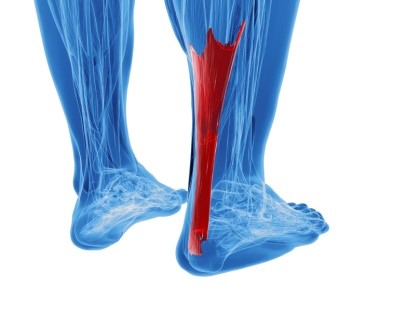 Dr. Jonathan Sinclair of the University of Central Lancashire participated in a study concerning runners and Achilles tendon injury. The study found that people who wear orthotics while running could prevent the possibility of Achilles injury. Sinclair used 12 male participants and had them run on a mat with sensors that measured the movement of the foot.
Dr. Jonathan Sinclair of the University of Central Lancashire participated in a study concerning runners and Achilles tendon injury. The study found that people who wear orthotics while running could prevent the possibility of Achilles injury. Sinclair used 12 male participants and had them run on a mat with sensors that measured the movement of the foot.
The study showed that the runners wearing the orthotics were less apt to Achilles tendon injury because of the ease of pressure the insoles provided to the foot. “This probably happens because orthotics offer further cushioning to that already provided by the shoe midsole,” Dr. Sinclair said.
Achilles tendon injuries can be very painful. If you think you have this kind of condition, pay a visit to podiatrist Dr. Sharon Pletcher of Pennsylvania. Dr. Pletcher can treat your foot and ankle needs.
What is the Achilles Tendon?
The Achilles tendon is a tendon that connects the lower leg muscles and calf to the heel of the foot. It is the strongest tendon in the human body, and is essential for making movement possible. Because this tendon is such an integral part of the body, any injuries to it can cause severe difficulties and should immediately be presented to a doctor.
What are the symptoms of an Achilles Tendon Injury?
There are various types of injuries that can affect the Achilles tendon. The two most common are Achilles tendinitis and ruptures of the tendon.
Achilles Tendinitis Symptoms
- Inflammation
- Dull to Severe Pain
- Increased blood flow to the tendon
- Thickening of the tendon
Rupture Symptoms
- Extreme pain and swelling in the foot
- Total immobility
Treatment and Prevention
Achilles tendon injuries are diagnosed by a thorough physical evaluation. Often the doctor will order an MRI to confirm the diagnosis. Treatment will involve rest, physical therapy, and in some cases, surgery. However, various preventative measures can be taken to avoid these injuries.
For more information about Achilles Tendon Injuries, follow the link below.
If you have any questions, please feel free to contact our office located in State College, PA. We offer the newest diagnostic and treatment technologies for all your foot care needs.
Read more about Achilles Tendon Injuries
Gout More Likely to Occur during Certain Temperatures
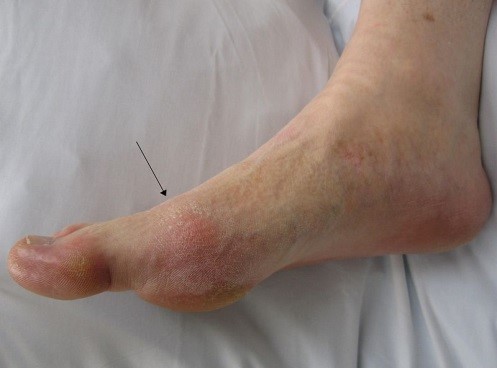 Students at Boston University School of Medicine conducted research experiment that shows a correlation between high temperatures and the reoccurrence of gout attacks. The head scientist, Tuhina Neogi, MD, PhD, and other faculty members started by gathering data from over 600 patients with suffering from gout using a questionnaire. The ages of the patients ranged from 21 – 88.
Students at Boston University School of Medicine conducted research experiment that shows a correlation between high temperatures and the reoccurrence of gout attacks. The head scientist, Tuhina Neogi, MD, PhD, and other faculty members started by gathering data from over 600 patients with suffering from gout using a questionnaire. The ages of the patients ranged from 21 – 88.
According to the data, it was discovered that temperatures of 70°-79° F were associated with a 43% increase of a potential gout attack occurring. When the temperature reached over 80° F the risk changed to 40%. Following their findings, researchers stated, “Patients with gout may be advised that under conditions of hot and/or dry weather, appropriate measures, such as increased water intake, should be considered to minimize the risk of recurrent gout attacks.”
The severity of gout attacks can vary, but they should always be granted proper medical care. For assistance with a foot condition like gout, contact Dr. Sharon Pletcher, DPM of Pennsylvania. Dr. Pletcher can figure out why you keep getting flare-ups and work with you to treat the root of the problem.
What is gout?
Diseases of the feet can affect the whole body, and symptoms usually arise within the feet. A condition like gout can make a patient’s ability to walk unbearable. The pain caused by this disease is often so agonizing that it requires elevation of the feet and some time off for them to fully recover.
Known in the past as “the disease of kings”, Gout is caused by an excess of uric acid in the body. Some common symptoms include pain, inflammation, and redness at the metatarsal/phalangeal joint of the base big toe. This buildup of acid is typically seen on the big toe of the foot and can cause inflammation, redness and swelling. Although these are common symptoms of the diseases others include joint pain, extreme fatigue and a high fever.
Gout can be treated by NSAIDs, which relieves pain and inflammation and other drugs which lowers the acid levels in the body.
If you have any questions please contact our office located in State College, PA. We offer the newest diagnostic and treatment technologies for all your foot care needs.
Read more about Gout
Women’s Chances of Developing RA Increase From Drinking Soda
 The Nurses’ Health Study and the Nurses’ Health Study II both indicate that a woman’s chances of developing a form of rheumatoid arthritis (RA) increase by 63% if she consumes soda on a regular basis. Alarmingly, this increase spikes up to 164% if the patient happens to be over the age of 55.
The Nurses’ Health Study and the Nurses’ Health Study II both indicate that a woman’s chances of developing a form of rheumatoid arthritis (RA) increase by 63% if she consumes soda on a regular basis. Alarmingly, this increase spikes up to 164% if the patient happens to be over the age of 55.
The first NHS study involved 79,000 American women, while the second NHS study consisted of 107,330. The participants involved in the study were asked every four years about how often they drank soda. The data did not show any correlation between drinking diet soda and contracting RA.
Rheumatoid arthritis is a very painful disease. For foot and ankle care, visit podiatrist Sharon L. Pletcher, DPM of Family Foot Center. Dr. Pletcher can treat your podiatric needs.
What Is Rheumatoid Arthritis?
Rheumatoid Arthritis (RA) is an autoimmune disorder in which the body’s own immune system attacks the membranes surrounding the joints. Inflammation of the lining and eventually the destruction of the joint’s cartilage and bone occurs, causing severe pain and immobility.
Rheumatoid Arthritis of the Feet
Although RA usually attacks multiple bones and joints throughout the entire body, almost 90 percent of cases result in pain in the foot or ankle area. Pain often initially presents in the toes before the condition worsens and spreads throughout the entire foot. Rheumatoid arthritis appears to be genetically inherited, so if you have a family history of RA, you may be predisposed to suffer from it as well.
Symptoms
- Swelling & pain in the feet
- Stiffness in the feet
- Pain on the ball or sole of feet
Diagnosis
Quick diagnosis of RA in the feet is important so that the podiatrist can treat the area effectively. Your doctor will ask you about your medical history, occupation, and lifestyle to determine the origin of the condition.
For more information about Rheumatoid Arthritis, follow the link below.
If you have any questions, please feel free to contact our office located in State College, PA. We offer the newest diagnostic and treatment technologies for all your foot and ankle injuries.
Read more about Rheumatoid Arthritis
Ingrown Toenails Happen to Kids Too
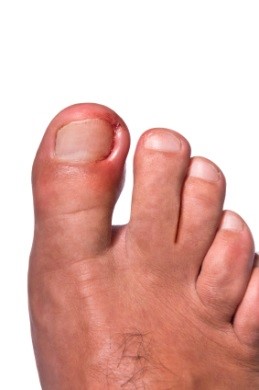 Parents need to know that kids are just as susceptible in developing ingrown toenails in their feet as adults do. Ingrown toenails generally happen when kids cut their nails too short. Parents should ensure their children cut their nails evenly and avoid trimming them down too much. Ingrown nails could potentially occur if a child wears socks and shoes that aren’t big enough for his or her feet.
Parents need to know that kids are just as susceptible in developing ingrown toenails in their feet as adults do. Ingrown toenails generally happen when kids cut their nails too short. Parents should ensure their children cut their nails evenly and avoid trimming them down too much. Ingrown nails could potentially occur if a child wears socks and shoes that aren’t big enough for his or her feet.
Other cases of ingrown toenails may simply caused by a child’s genetic predisposition to curved nails. No matter what the cause, you should never try to treat this condition at home. Removing a young one’s ingrown nail with a “bathroom surgery” can lead to a bacterial infection.
Ingrown toenails are terribly uncomfortable, and in the worst cases surgery might be required to get rid of them. If you think you have an ingrown toenail, consult with Sharon L. Pletcher, DPM of Family Foot Center. Dr. Pletcher will confirm your diagnosis and do everything she can to treat your problem.
Ingrown Toenails Causes
Ingrown toenails occur when a toenail grows sideways into the bed of the nail, causing pain, swelling, and possibly infection.
There are a number of risk factors for ingrown toenails. Some include cutting your nails too short, participating in strenuous sports, diabetes, obesity, and fungal infection. Some are genetically predisposed to ingrown nails, although wearing ill-fitting or damp shoes can exacerbate the problem.
Treatment
There are a number of steps you can take to treat ingrown nails:
-Let your toenails grow out
-Soak the toes in hot water with antibiotic soap or Epsom salts
-Placing a piece of cotton under the affected nail may allow the toe to grow up instead of into the nail bed
-Rest with your feet up
If however, your pain is severe, or you see red streaks running up your leg, you should see a podiatrist. Your podiatrist may make a small incision and remove part of the toe nail to relieve the pressure. A local anesthetic may be used to lessen the discomfort of the operation. Topical medication may also be prescribed to prevent the regrowth of the problem nail.
If you have any questions, please feel free to contact our office located in State College, PA. We offer the newest diagnostic and treatment technologies for all your foot and ankle injuries.
Read more about Ingrown Toenails




